Cloud-Clone’s HRP-SA is comparable in quality to Thermo’s HRP-SA
HRP-SA means horseradish peroxidase-labeled streptavidin, it is often used as a signal amplifier for the detection of biotinylated molecules, including biotinylated nucleic acids, proteins, antibodies, etc., which can improve the sensitivity of detection.
SA is a tetramer protein composed of four identical peptide chains with molecular weight of 52.8kDa. One SA can bind to four biotins with high specificity. SA showed much lower non-specific biotin binding ability than Avidin from egg white, this is because SA has no glycogen and its isoelectric point is nearly neutral. So SA is more widely used than Avidin.
HRP is stable, when incubated with particular substrates, it can produce a colored, fluorescent, or luminescent molecular derivatives. Therefore, it is widely used in the detection of molecular biology, biochemistry, immunology and other fields.
At present, Cloud-Clone has established mature prokaryotic fermentation technology, which can be used for mass production of SA with high purity (95%). Besides, combined with mature HRP labeling technology platform, we could provide the industrial mass production of HRP-SA. HRP-SA can be widely used in two fields: first, as a general reagent for signal amplification system of in vitro diagnosis (IVD) reagent; second, as a general reagent for signal amplification system of color development system of scientific research tests (such as ELISA, WB, IHC, Southern, etc.).
Comparison of bio-activity of SA from different company were tested by Modified Green method. The results are shown below.
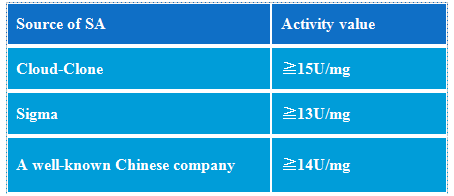
For the stability of HRP-SA and its performance in various experiments, the test data are shown below.
(1) Stability Test
The ready-to-use HRP-SA was placed at 37 degrees for 0 day, 3 days and 7 days, respectively. ELISA kit for GAPDH (Cat. No.: SEB932Hu) was used for the detection, the results are shown below.
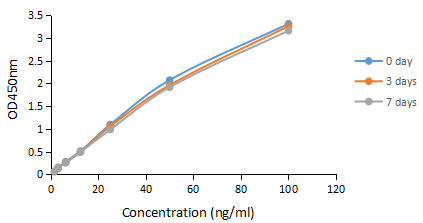
(2) IHC Test
Human breast tissue was pretreated with microwave antigen repair method, then the slides were incubated with 5µg/ml anti-PCNA antibody (Cat. No.: CAA591Hu22). After that, 1µg/ml biotin-linked caprine anti-mouse IgG polyclonal antibody (Cat. No.: SAA544Mu17) was added, and then 1µg/ml HRP-SA was added. DAB was used as color development reagent, hematoxylin was used to restain the tissue, and resin was used to seal. The result is shown below.
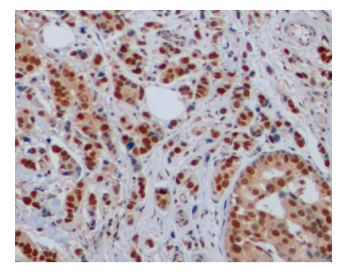
(3) ELISA Test
2µg/ml Anti-OVA antibody (Cat. No.: MAB459Ge21) was coated. OVA (Cat. No.: NPB459Ge01) was used as standard, the original concentration is 50ng/ml. And then, 1µg/ml Biotin-Linked Polyclonal Antibody to OVA (Cat. No.: LAB459Ge71) was added. After adding 1µg/ml HRP-SA and other related reagents, the plate was read at 450nm. The result is shown below.
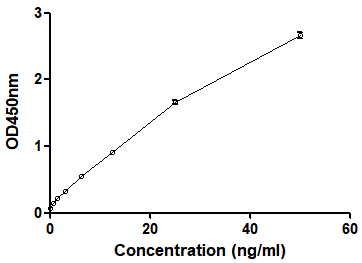
After completing these basic tests, we also compared the performance of HRP-SA from different manufacturers in ELISA.
①ELISA was performed by using ELISA kit for GAPDH (Cat. No.: SEB932Hu) (except detection reagent B), HRP-SA from three different sources were tested. The results are shown below.
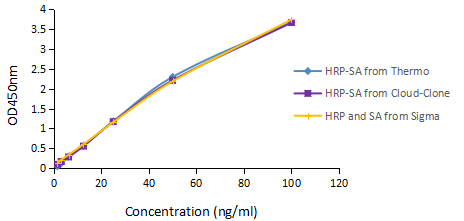
②10 ELISA kits (except detection reagent B) for different targets were randomly selected for ELISA tests, HRP-SA from two different sources were used. The results are shown below.
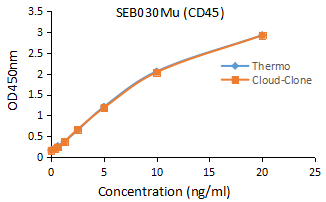
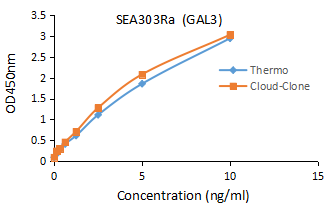
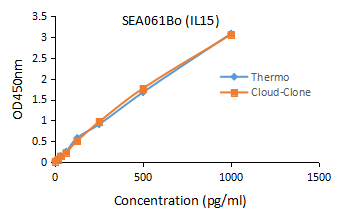
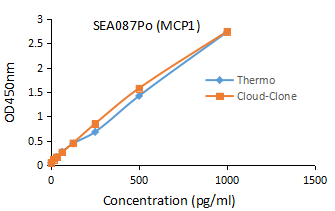
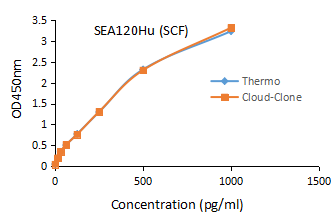
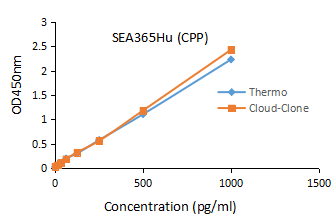
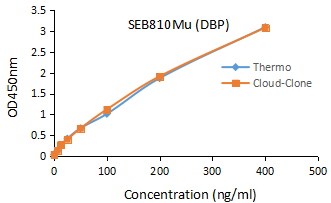
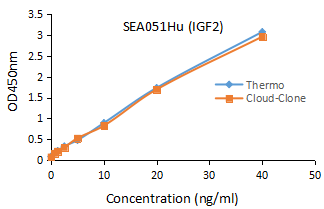
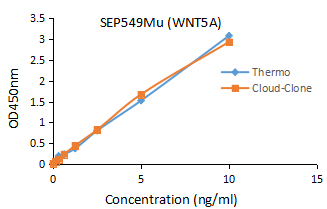
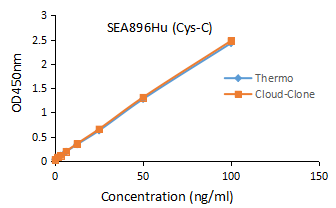
For more information, please visit:http://www.cloud-clone.com/
